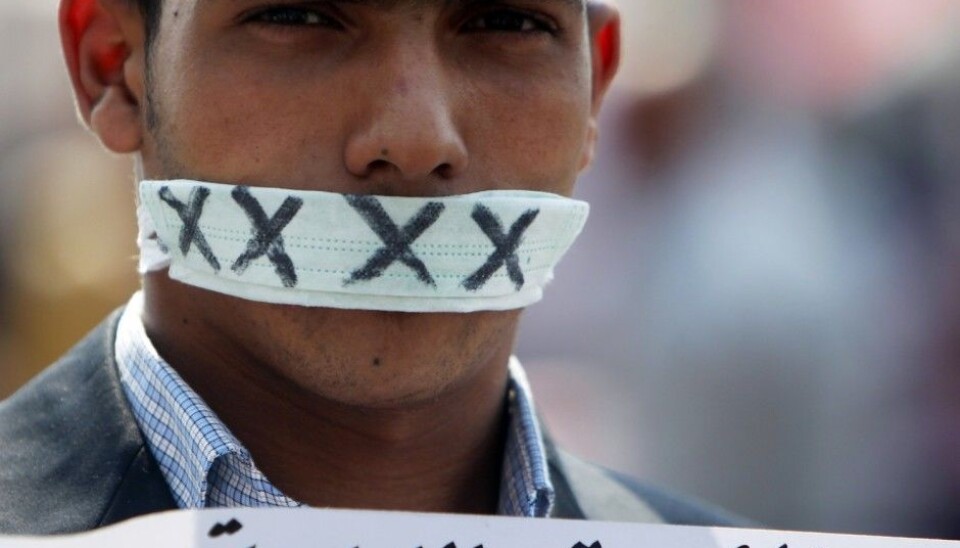
Why Arab youths revolted
Male domination and female oppression characterise many Arab countries. But in 2011, the youth rose up to demand change. What were the triggers?
The Arab Spring raised high hopes for greater freedom and economic growth.
Today we know that the citizen-led movement resulted in bloody protests, several revolutions and war in Syria, Libya and Yemen.
Beneath the surface a lot has happened, too. Women’s rights have not seen much progress. But a new younger generation has been working to have more of a say in society at the expense of the gerontocracy.
Some places they almost managed it. But only almost.
Ten Norwegian and French experts on the Middle East and North Africa recently presented the results of their research that focused on “What happened after the Arab Spring in 2011?”
From hope to despair
The Arab Spring in 2011 was above all a young people’s rebellion.
About 60 per cent of the population in Arab countries are under 25 years old. No other region in the world has a greater proportion of young people.
Hardly anywhere else in the world do today’s youth feel that they have such poor opportunities for their future.
Today many young women and men feel the disappointment of the youth protests that haven’t brought hoped-for progress.
Egyptian youth in prison
“There is a wall between today's youth in Egypt and the military regime headed by General Sisi,” said Albrecht Hofheinz recently during a conference that the Middle East researchers held at the University of Oslo (UiO).
“Many young Egyptians are in prison. But for every young voice the regime imprisons or silences in other ways," a new voice pops up.
Hofheinz is particularly interested in how the youths’ reaction to the oppression in Egypt has sparked the flourishing of culture in the country.
Open political discussion in today's Cairo is almost nonexistent, but art and culture are even more forbidden or partially forbidden.
Terror’s young faces
Brynjar Lia is a professor at UiO. He is above all known for his research on terrorism in the Islamic world.
Some of his research involves sitting and watching the gruesome content of videos posted by the terrorist organization IS. When Lia looked at several of these videos - and zoomed in on the photos - he discovered an interesting pattern.
“The people in these videos are often strikingly young, some probably only in their late teens or early twenties,” says Lia.
The researcher points out that IS has given young people the opportunity to gain power and influence in the organization.
“IS is playing on the sense of powerlessness that young people in the region feel. They offer an alternative. Young people hold key roles in an ideological utopia that promises to transform the world,” he says. Sadly this youthful energy is used on an extremist project that destroys life both for the young people who are attracted to IS and the civilian population in the region.
Gerontocracy in the Arab world
“The IS leadership is relatively young, at least compared to the normal age for government leaders and politicians in the region,” says Lia.
The top leader Abu Bakr al-Baghdadi is still only in his mid-forties.
By contrast, Saudi Arabia's King Salman, Kuwait's Emir Sabah al-Sabah, Algerian President Abdelaziz Bouteflika, Tunisian President Beji Caid Essebsi and Palestinian President Mahmoud Abbas are all over 80 years old.
Although successions to the throne in several Arab countries have brought "younger" leaders to power in countries like Morocco, Jordan, Qatar and Syria, all the men are over 50. The only exception is the Emir of Qatar.
Dag Tuastad, a researcher at the Peace Research Institute Oslo (PRIO), has seen the generational conflict among Palestinians - both in Israel and in the West Bank and Gaza.
“Palestinians in the West Bank are governed by the aged. The Palestinian Fatah movement has managed to keep generations of young Palestinians out of politics,” Tuastad said during the conference at UiO.
On the other hand, several young politicians are leading the political work among Palestinians in Israel. The Palestinian Joint List party is currently the third largest in Israel's Knesset with 13 members. In Israel, the Palestinian Arabs are part of a political culture that is making room for young people.
Feeling of hopelessness among youth
In the fall of 2015 and spring of 2016, several incidents occurred where youths from the West Bank and Palestinian East Jerusalem attacked civilian strangers or Israeli soldiers with knives in Jewish-dominated West Jerusalem. The youths acted alone and the attacks did not seem to be organized in any way.
What brings young people in their teens to act so desperately, often leading to their own untimely deaths?
PRIO researcher Jacob Høigilt thinks much of the explanation lies in the conditions these young people are forced to live under.
“They live under political governance in which they have no voice. Fatah rule in the West Bank has become increasingly authoritarian since coming to power in 1994,” says Høigilt. And in the Gaza Strip young people live under even more authoritarian rule, he says.
From a wider perspective, the reason has to do with the strong feelings of powerlessness that youths feel.
Høigilt says that young people who want to practice peaceful resistance against Israeli oppression receive no support from Palestinian authorities.
“At the same time, young Palestinians are living in a society where norms and values are disintegrating, and many lose hope,” he says.
“When I get to meet young Palestinians as a researcher, it’s mostly young people who work in organized political groups. But very few young people participate in these groups. Most Palestinian youths struggle just to cope with everyday life. So you have a small group that finds life so desperately hard to live, that they grab a knife and attack the other people they see as symbols of their own difficulties,” Høigilt says.
------------------------------------------------






























